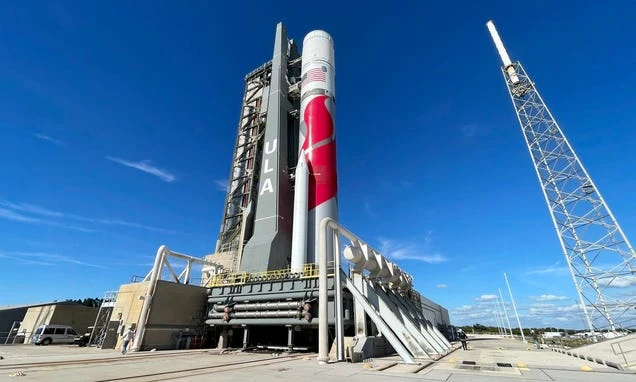What to Know About the New Rocket Launching a Major moon Mission on Monday
The Debut of Vulcan centaur
On Monday, January 8, United Launch Alliance’s Vulcan centaur is scheduled for its inaugural flight, aimed at sending various payloads to the Moon.
The 202-foot-tall (61.6-meter) Vulcan centaur is set to launch from Space Launch Complex-41 at Cape Canaveral, marking ULA’s first new rocket design since its 2006 inception.
Evolutionary Features
Although not as advanced as SpaceX’s rockets, this expendable rocket boasts Features that could make it a cornerstone vehicle in the industry.
It integrates design elements from both ULA’s atlas V and Delta IV rockets and is poised to be their successor, delivering payloads to a wide range of target destinations.
Vulcan centaur’s developmental journey was significantly influenced by both geopolitical events and competitive pressures in the aerospace industry.
Geopolitical and Competitive Pressures
The annexation of Crimea by Russia in 2014 was a pivotal moment, leading ULA to collaborate with blue origin in developing the BE-4 engines.
This signified a tactical shift toward greater national self-reliance in rocket engine technology, prompted by growing competition from SpaceX.
High Versatility
The highly versatile Vulcan centaur rocket is capable of launching multiple payloads simultaneously, equipped with the capability to reach a wide range of target destinations.
Its payload capacity varies based on the number of solid rocket boosters used, ranging from zero to six SRBs. These Graphite Epoxy Motor (GEM) 63XL Solid Rocket Boosters (SRBs) are provided by northrop grumman.
Unique Configuration
The rocket’s configuration can be recognized by its unique code, specifying the number of SRBs and payload fairing length, available in standard and long variants.
Its maximum capability allows it to carry up to 25.8 metric tons to LEO and 7 metric tons to GEO, showcasing its adaptability and flexibility on Missions.
Propulsion and Payload Fairings
The first stage is equipped with two BE-4 engines, each producing 550,000 pounds of thrust, using a combination of liquified natural gas and liquid oxygen as propellants.
The second stage is powered by two RL10 engines from aerojet rocketdyne, while the rocket’s payload fairings can reach up to 70 feet in length and 17.7 feet in diameter.
Challenges and Advancements
Despite facing challenges and delays, including the impact of the covid-19 pandemic, Vulcan centaur has completed key tests, setting the stage for its upcoming maiden voyage.
The rocket, crucial for U.S. national security and commercial space ventures, will deploy key satellites and spaceplanes, meeting various security needs and executing important launches.
The Future of Vulcan centaur
Vulcan centaur’s flexibility and mission adaptability set it apart in the industry, challenging SpaceX for key contracts and showcasing its potential to disrupt the sector.
As it begins its journey on Monday, the aviation industry eagerly waits to witness the performance and impact of ULA’s new cornerstone vehicle, as it embarks on a major moon mission launch.
Source: gizmodotech








No Comments